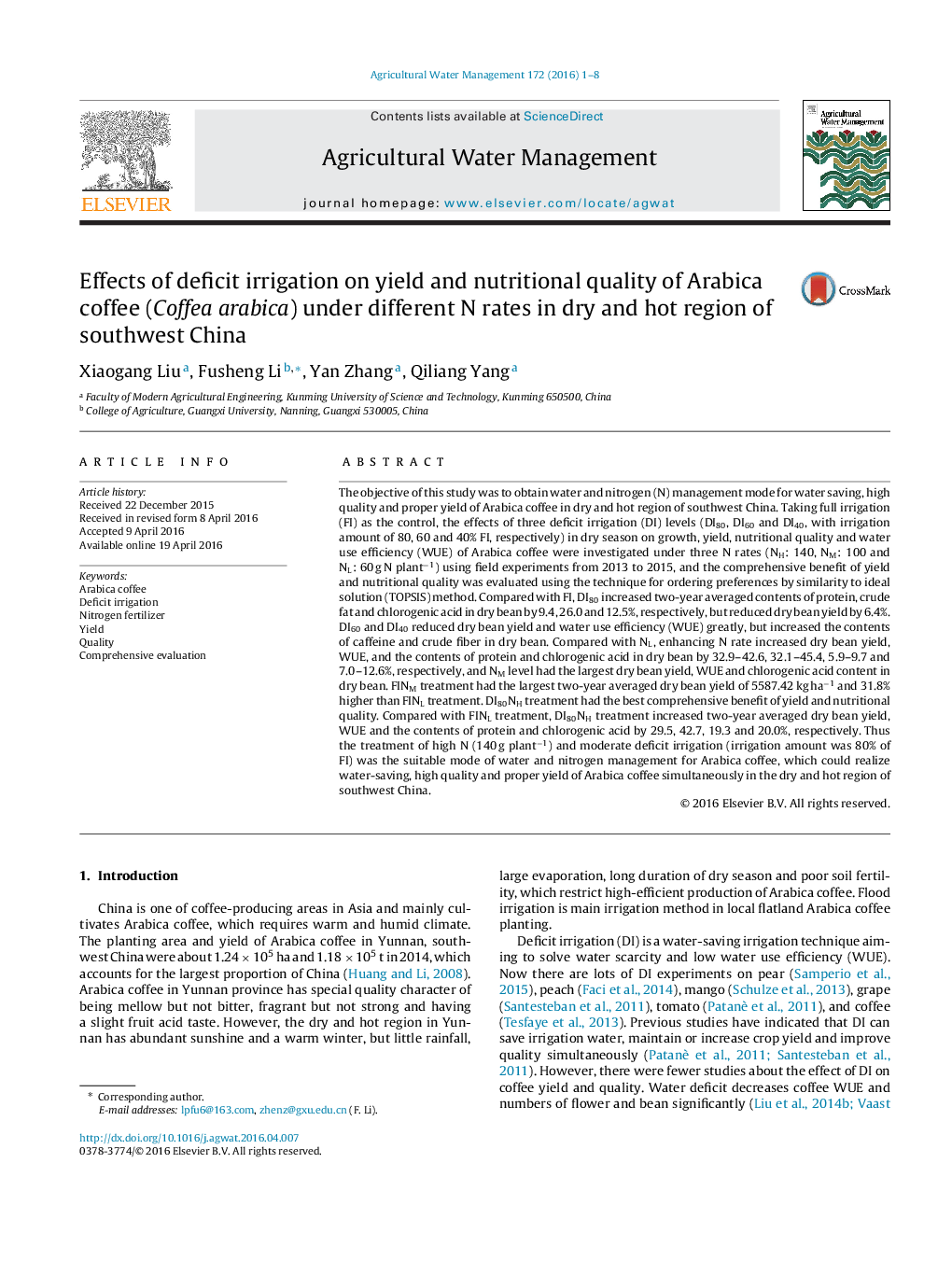| Article ID | Journal | Published Year | Pages | File Type |
|---|---|---|---|---|
| 6363504 | Agricultural Water Management | 2016 | 8 Pages |
â¢Moderate deficit irrigation (DI1) saved water and improved nutritional quality of Arabica coffee simultaneously.â¢Middle N rate (NM) had the highest dry bean yield, water use efficiency and chlorogenic acid content in dry bean.â¢DI1NH treatment had the best comprehensive benefit of yield and nutritional quality.â¢DI1NH treatment was the suitable mode of water and nitrogen management for Arabica coffee in dry and hot region of southwest China.
The objective of this study was to obtain water and nitrogen (N) management mode for water saving, high quality and proper yield of Arabica coffee in dry and hot region of southwest China. Taking full irrigation (FI) as the control, the effects of three deficit irrigation (DI) levels (DI80, DI60 and DI40, with irrigation amount of 80, 60 and 40% FI, respectively) in dry season on growth, yield, nutritional quality and water use efficiency (WUE) of Arabica coffee were investigated under three N rates (NH: 140, NM: 100 and NL: 60 g N plantâ1) using field experiments from 2013 to 2015, and the comprehensive benefit of yield and nutritional quality was evaluated using the technique for ordering preferences by similarity to ideal solution (TOPSIS) method. Compared with FI, DI80 increased two-year averaged contents of protein, crude fat and chlorogenic acid in dry bean by 9.4, 26.0 and 12.5%, respectively, but reduced dry bean yield by 6.4%. DI60 and DI40 reduced dry bean yield and water use efficiency (WUE) greatly, but increased the contents of caffeine and crude fiber in dry bean. Compared with NL, enhancing N rate increased dry bean yield, WUE, and the contents of protein and chlorogenic acid in dry bean by 32.9-42.6, 32.1-45.4, 5.9-9.7 and 7.0-12.6%, respectively, and NM level had the largest dry bean yield, WUE and chlorogenic acid content in dry bean. FINM treatment had the largest two-year averaged dry bean yield of 5587.42 kg haâ1 and 31.8% higher than FINL treatment. DI80NH treatment had the best comprehensive benefit of yield and nutritional quality. Compared with FINL treatment, DI80NH treatment increased two-year averaged dry bean yield, WUE and the contents of protein and chlorogenic acid by 29.5, 42.7, 19.3 and 20.0%, respectively. Thus the treatment of high N (140 g plantâ1) and moderate deficit irrigation (irrigation amount was 80% of FI) was the suitable mode of water and nitrogen management for Arabica coffee, which could realize water-saving, high quality and proper yield of Arabica coffee simultaneously in the dry and hot region of southwest China.
